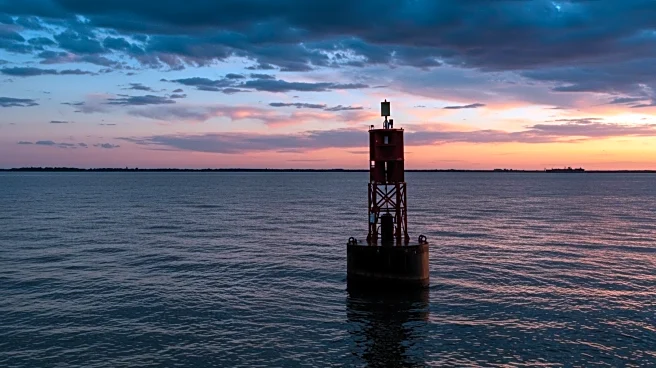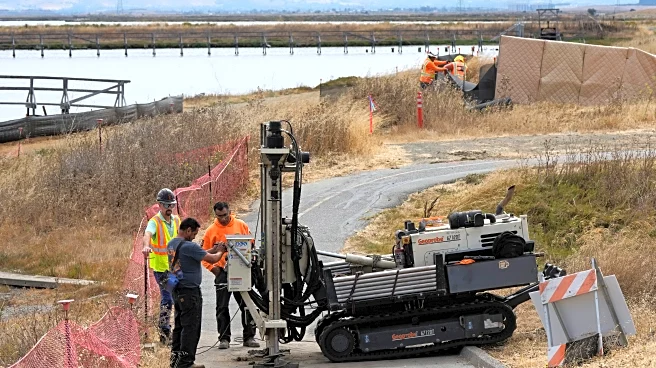What is the story about?
What's Happening?
The U.S. inland waterways system plays a crucial role in the nation's economy, serving as a vital component of international trade networks. According to the U.S. Army Corps of Engineers (USACE), the internal portion of U.S. waterborne commerce decreased from 622 million st in 2007 to 449 million st in 2023. Major barge traffic flows include petroleum products, chemicals, and food and farm products. Despite reduced demand, the barge fleet has grown moderately, with the average length of haul increasing from 437 miles to 494 miles. The Mississippi River dominates the system, with significant export and import components driving barge flows. Recent trade developments, including tariffs, have impacted cargo movements, with U.S. seaborne grain shipments increasing by 9% year-on-year.
Why It's Important?
The inland waterways system is integral to the U.S. economy, facilitating the movement of essential goods and supporting agricultural exports. Changes in international trade policies, such as tariffs, can significantly impact barge traffic and freight rates. The system's ability to adapt to global economic shifts and environmental challenges is crucial for maintaining economic stability. The waterways also offer investment opportunities, attracting private equity and infrastructure funds due to their long-term contracts and physical assets. The system's resilience and adaptability are vital for sustaining U.S. economic growth and competitiveness in global markets.
What's Next?
Stakeholders are closely monitoring the Trump administration's trade policies, which could affect grain exports and import cargo flows. The U.S. Congress is expected to take action on the Water Resources Development Act (WRDA) in 2026, supporting infrastructure improvements. The U.S. Maritime Administration's Marine Highway Program has expanded its network, potentially increasing funding for terminals and barge services. These developments may influence future investment and operational strategies within the inland waterways system.
Beyond the Headlines
The inland waterways system faces challenges related to climate variability, impacting freight pricing and transport efficiency. The system's ability to manage low and high water levels is crucial for maintaining operations. Private investment in the sector is driven by the contractual nature of barging, offering steady returns and tax-efficient income streams. The system's role in national security and economic prosperity is recognized by industry associations, which advocate for regulatory reforms and infrastructure investments.
AI Generated Content
Do you find this article useful?












